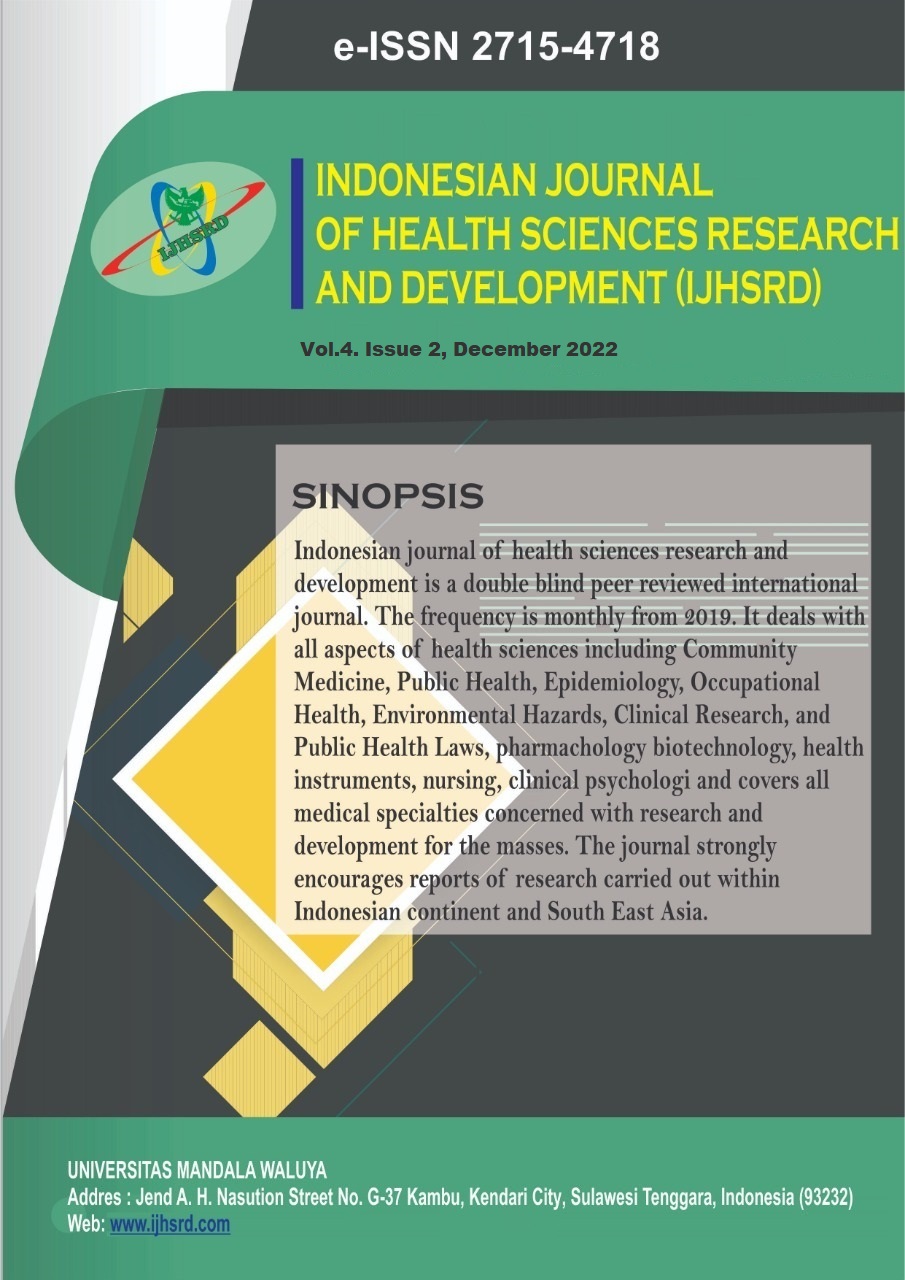Main Article Content
Abstract
Objectives: This paper attempts to explain the term inequity in public health based on The Rainbow Model introduced by Dahlgreen & Whitehead (1991) and The Social determinant of Health (SDH) framework of the Commision of Social Determinants of Health).
Methods: The author applied a narrative review and examined 29 relevant English literatures and found two themes.
Results: First, Explanation of The Rainbow Model’ introduced by Dahlgreen & Whitehead (1991) and The SDH framework of the Commision of Social Determinants of Health. Second, the perspective of traditional public health emphasizes the proximal determinants while New Public health emphasis on intermediate determinants and distal determinants.
Conclusions: Therefore, as a public health professional need to consider about proximal, intermediate and distal determinant of public health issue.
Keywords
Article Details

This work is licensed under a Creative Commons Attribution-ShareAlike 4.0 International License.
References
- World Health Organization.2010. Action on the social determinants of health : learning from previous experiences.
- Keleher H. 2011., Understanding Health, 3rd edn, Oxford University Press, Melbourne.
- Walley J. & Gerein, N 2010, ‘ Maternal, neonatal, and child health’, in Walley, J & Wright, J (eds), Public Health an action guide to improving health, 2nd edn, Oxford University Press, New York, pp. 181-212
- Nettleton S.2006. The Sociology of Health and Illness, 2nd edn, Polity Press, UK.
- Kawachi I, Subramanian S V.2002. Almeida-Filho N. A glossary for health inequalities. Vol. 56, Journal of Epidemiology and Community Health. p. 647–52.
- Braveman P, Gruskin S. 2003. Defining equity in health. J Epidemiol Community Health. Apr 1;57(4):254–8.
- Baum F.2008. The New Public Health, 3rd edn, Oxford University Press, Melbourne.
- Titaley CR, Hunter CL, Dibley MJ, Heywood P. 2010. Why do some women still prefer traditional birth attendants and home delivery?: A qualitative study on delivery care services in West Java Province, Indonesia. BMC Pregnancy Childbirth.
- Agus Y, Horiuchi S, Porter SE.2012. Rural Indonesia women’s traditional beliefs about antenatal care.
- Ensor T, Quayyum Z, Nadjib M, Sucahya P.2009. Level and determinants of incentives for village midwives in Indonesia. Health Policy Plan.
- Weaver, EH, Frankenberg, E, Fried, BJ, Thomas, D, Wheeler, SB & Paul J.2013. Effect of village midwife program on contraceptive pervalence and method choice in Indonesia. Stud Fam Plann. vol.44(4).page 389–409.
- Shankar & JF.2008. The village-based midwife programme in Indonesia. Lancet. vol.371: page 1226–1229.
- Japan International Cooperation Agency (JICA). 2011. Country Gender Profile: Indonesia Final Report PPD JR 11-004.
- Akbar, M. I., Rachman, W. O. N. N., & Risky, S. (2020). Factors relating to the performance of health workers in abeli city health center, kendari city: Performance of health workers. Indonesian Journal Of Health Sciences Research And Development (IJHSRD), 2(1), 9-14.
- Gabrysch S, Campbell OMR.2009. Still too far to walk: Literature review of the determinants of delivery service use. BMC Pregnancy Childbirth.
- Novera.2004. Indonesian Postgraduate Students studying in Australia : An examination of their academic, social and cultural experiences. Int Educ J.
- Analen C. 2007.Saving mother’s lives in rural Indonesia’. Buletin of the World Health Organization, vol. 5, no. 10, p. 740
- Akbar, M. I. (2020). Analysis Of The Needs Of General Practitioners In Public Health Centers Using Health Workload Method. Public Health of Indonesia, 6(2), 63-9.
- Suryahadi, A. Yumna, UR. Raya, DMA.2010. Review of Government’s Poverty Reduction Strategies, Policies, and Programs in Indonesia. Research Report, SMERU Research Institute, Jakarta.
- Hatt L, Stanton C, Makowiecka K, Adisasmita A, Achadi E, Ronsmans C. 2007. Did the strategy of skilled attendance at birth reach the poor in Indonesia? Bull World Health Organ. p. 774–82.
- Houweling TAJ, Ronsmans C, Campbell OMR, Kunst AE.2007. Huge poor-rich inequalities in maternity care: An international comparative study of maternity and child care in developing countries. Bull World Health Organ.
- Green A.2010. Health policy and systems’, in Walley, J & Wright, J (eds), Public Health an action guide to improving health, 2nd edn, Oxford University Press, New York, .
- The World Bank. Investing in Indonesian Health : Challenges and opportunities for future public spending. 2008;
- Sharma S. 2003. The Asian Financial Crisis: Crisis, Reform and Recovery, Manchester University Press, Manchester and New York.
- Chandra AC.2011. A Dirty Word? Neo-liberalism in Indonesia’s foreign economic policies. Trade Knowledge Network, Southeast Asia.
- Navarro V. 2009. What we mean by social determinants of health. Int J Heal Serv. Vol. 39, No. 3, p. 423-441
- Desai R. 2012. Introduction to international development : Approaches, Actors, and Issues, 2nd edn, Oxford University Press, Canada. p.46–67.
- Jim Simpson Consultanc.2014. Healthy Partnerships Checklist Empowerment tools-1 Empowering People and Healthy Partnerships [Internet] Available from: www.jimsimpsonconsultancy.co.uk
- UNDP. 2013. Human Development Report 2013 The Rise of the South: Human Progress in a Diverse World. New York, USA
